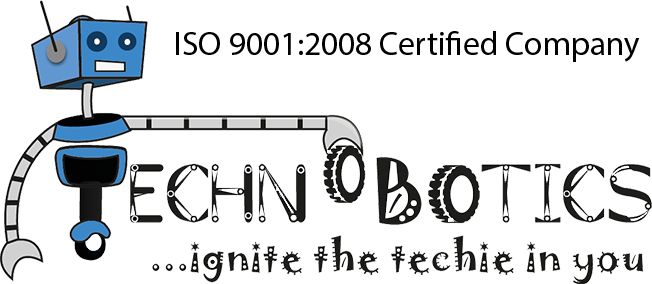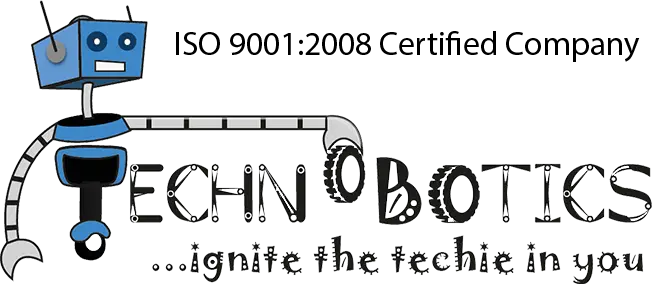Coding and robotics curriculum share a symbiotic relationship, each essential to the advancement and functionality of the other. At the core of this relationship lies the concept of programming, the language through which humans communicate instructions to machines. In the realm of robotics, robotics is the easiest way to learn coding that serves as the lifeblood, dictating the behavior, functionality, and intelligence of robotic systems.
To comprehend the depth of this relationship, it’s imperative to understand the fundamental role that coding plays in robotics. Robotics involves the creation and operation of machines capable of performing tasks autonomously or semi-autonomously. These tasks can range from simple actions like moving from one point to another, to complex operations such as surgical procedures or space exploration. Robotics is the easiest way to learn coding as coding is the core of Robotics.
Understanding The Relationship Between Coding And Robotic
Coding provides the means through which these tasks are defined, executed, and refined. Whether it’s a line-following robot navigating a maze or an industrial robotic arm assembling intricate components, every action is meticulously orchestrated through code. Through programming, roboticists can imbue machines with intelligence, enabling them to perceive their environment, make decisions, and adapt to changing circumstances.
One of the primary coding tutorials for beginners used in robotics is imperative programming. In imperative programming, developers specify a sequence of commands that the robot must execute to achieve a particular goal. This could involve controlling motors to move the robot, processing sensor data to make decisions, or interacting with external devices. Languages like C, C++, Python, and Java are commonly used for imperative programming in robotics due to their versatility and performance.
Beyond imperative programming, robotics and coding tutorials for beginners also encompasses concepts from other programming paradigms such as object-oriented programming (OOP) and functional programming. OOP facilitates modular design, allowing developers to create reusable components that encapsulate functionality and data. This approach enhances code maintainability and scalability, crucial aspects in complex robotic systems. Functional programming, on the other hand, emphasizes the use of pure functions and immutable data structures, which can improve code reliability and concurrency management in robotics applications.
The significance of coding and robotics curriculum becomes even more apparent when considering the increasing complexity of robotic systems. Modern robots are equipped with a myriad of sensors, actuators, and computational resources, enabling them to interact with their surroundings in sophisticated ways. However, harnessing this complexity requires advanced programming techniques and algorithms.
Machine learning and artificial intelligence (AI) in coding tutorials for beginners have emerged as powerful tools in the field of robotics, revolutionizing how robots perceive, learn, and interact with the world. Neural networks, reinforcement learning, and computer vision algorithms have enabled robots to perform tasks once deemed impossible or highly challenging. Whether it’s recognizing objects, navigating dynamic environments, or learning from human demonstrations, machine learning algorithms heavily rely on coding for implementation and deployment.
Furthermore, the coding and robotics curriculum plays a crucial role in the simulation and testing of robotic systems. Before deploying robots in real-world scenarios, developers often utilize simulation environments to validate algorithms, refine behaviors, and assess performance. Simulation frameworks like Gazebo, V-REP, and Webots enable developers to create virtual replicas of robotic systems and environments, allowing for rapid prototyping and iteration. These simulations are powered by code, which defines the physics, dynamics, and interactions within the virtual environment.
In addition to traditional programming languages, coding classes Mumbai also leverages specialized software and frameworks tailored to the unique requirements of the field. ROS (Robot Operating System), for instance, provides a comprehensive middleware infrastructure for building robotic applications. ROS facilitates communication between different components of a robotic system, simplifying development and integration. Similarly, platforms like Arduino and Raspberry Pi offer accessible hardware and software solutions for prototyping and experimenting with robotics projects, making coding more accessible to enthusiasts and hobbyists.
The relationship between coding and robotics extends beyond mere technicalities; it encompasses creativity, innovation, and problem-solving. The ability to translate ideas into code empowers roboticists to push the boundaries of what’s possible, driving advancements in various domains including healthcare, manufacturing, agriculture, and space exploration. From humanoid robots that assist with daily tasks to autonomous drones that survey disaster zones, the applications of coding in robotics are as diverse as they are impactful.
Coding and robotics are intrinsically linked, with coding serving as the foundation upon which robotic systems are built and operated. From programming basic behaviors to implementing advanced algorithms, coding enables robots to perceive, interact, and adapt to their environment. As robotics continues to evolve, driven by advancements in AI, machine learning, and hardware technologies, the role of coding will only become more prominent, shaping the future of automation and human-machine interaction.
Why To Learn Robotics?
Children should learn robotics from coding classes Mumbai for several compelling reasons that contribute to their development and future success. Here are some key points explaining why this field is beneficial for young learners:
- Critical Thinking and Problem-Solving Skills: Robotics involves designing, building, and programming machines to perform tasks autonomously. This process requires students to think critically and solve problems creatively, fostering skills that are essential in various aspects of life.
- STEM Education: Robotics integrates concepts from science, technology, engineering, and mathematics (STEM), providing a hands-on approach to learning these subjects. By engaging in robotics activities, children develop a deeper understanding of these disciplines and how they relate to real-world applications.
- Preparation for Future Careers: In today’s rapidly evolving job market, proficiency in STEM fields is highly sought after. By learning robotics at a young age, children are better prepared for future careers in fields such as engineering, computer science, and technology.
- Creativity and Innovation: Robotics encourages creativity and innovation as students design and build robots to solve specific challenges. This process allows them to explore their imagination and think outside the box, fostering a mindset of innovation that can be applied to various areas of life.
- Collaboration and Teamwork: Many robotics activities involve teamwork, requiring students to collaborate effectively with their peers to achieve common goals. Through these collaborative experiences, children learn valuable interpersonal skills such as communication, cooperation, and leadership.
- Adaptation to Technological Advances: In an increasingly technology-driven world, it is essential for children to be comfortable with emerging technologies. Learning robotics equips them with the skills and knowledge needed to adapt to technological advances and become active participants in shaping the future.
- Engagement and Motivation: Robotics activities are inherently engaging and hands-on, capturing the interest of children and motivating them to learn. This high level of engagement helps sustain their interest in STEM subjects and encourages continued exploration and learning.
- Real-World Applications: Robotics has numerous real-world applications across various industries, from manufacturing and healthcare to space exploration and entertainment. By learning robotics, children gain insight into how technology can be used to solve real-world problems and improve society.
- Inclusivity and Diversity: Robotics offers opportunities for children of all backgrounds and abilities to participate and excel. It promotes inclusivity and diversity by providing a platform where students can showcase their unique talents and perspectives.
About Technobotics
Technobotics robotics courses offer hands-on learning experiences in robotics, combining technology and engineering principles. Students engage in designing, programming, and building robots, fostering skills in critical thinking, problem-solving, and teamwork. These courses empower students to explore STEM concepts through practical application, preparing them for future innovation and success.
Conclusion
Children should learn robotics because it promotes critical thinking, STEM education, creativity, collaboration, and prepares them for future careers in a technology-driven world. By engaging in robotics activities, children develop essential skills and knowledge that will benefit them throughout their lives. For top coding classes Mumbai visit Technobotics.


